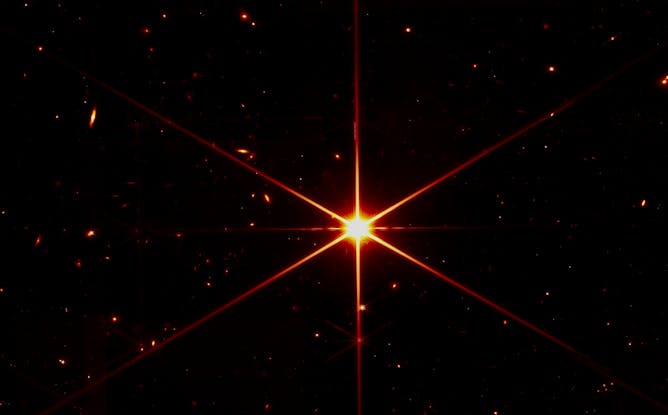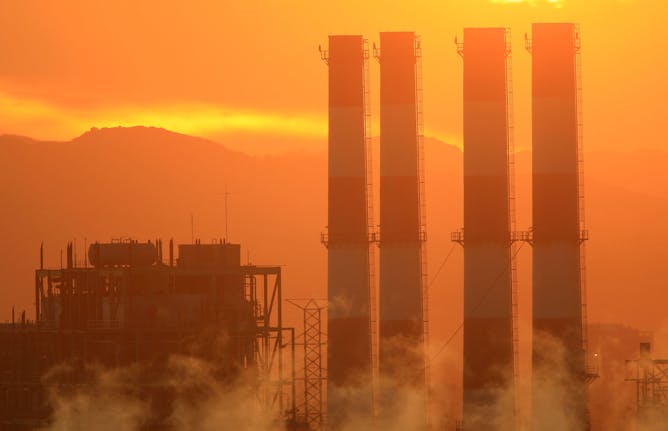|
Images from the largest space telescope ever built – the James Webb Space Telescope – will be shared with the public on July 12, NASA announced yesterday. Astronomer Marcia Rieke from the University of Arizona, who is principal investigator for the telescope’s Near Infrared Camera, takes us inside the successful launch and deployment of Webb. The “teaser observations” NASA and its partners will release next month will “show the beauty of Webb imagery and also
give astronomers a real taste of the quality of data they will receive,” she writes.
One of the biggest questions related to climate change is how much “committed warming” there is – that is, how much excess heat is already baked into the system and how quickly temperatures could drop if emissions were to stop. Earth sciences professor Julien Emile-Geay from USC Dornsife College of Letters, Arts and Sciences unpacks this question by explaining the different factors at play and by reviewing the latest research. At the heart of the problem, he
writes, “are long delays between changes in human behavior and changes in the climate.”
One of the most thought-provoking science articles for me in the past week was written by a team of physicians who study the use of opioids in surgical settings. In "Why opting out of opioids can be dangerous in the operating room“ they examine the handful of state directives that allow patients to forbid the use of opioids in any health care setting, and the harms that can bring during surgery. They explain the concept of balanced anesthesia and argue for a
nuanced approach with a reduced amount of opioids during recovery after surgery, rather than an outright elimination.
Also in this week’s science news:
If there’s a subject you’d like our science editors to investigate, please reply to this email.
|

The mirror on the James Webb Space Telescope is fully aligned and producing incredibly sharp images, like this test image of a star.
NASA/STScI via Flickr
Marcia Rieke, University of Arizona
It has taken eight months to test and calibrate all of the instruments and modes of the James Webb Space Telescope. A scientist on the team explains what it took to get Webb up and running.
|

Greenhouse gases emitted today linger in the atmosphere for years to centuries.
David McNew/Getty Images
Julien Emile-Geay, USC Dornsife College of Letters, Arts and Sciences
Thanks to humans, the concentration of planet-warming carbon dioxide in the atmosphere is now 50% higher than before the industrial era. These gases are raising Earth’s temperature.
|

Opioids can help reduce the amount of medication needed to achieve anesthesia.
gpointstudio/iStock via Getty Images Plus
Mark C. Bicket, University of Michigan; Jennifer Waljee, University of Michigan; Paul Edward Hilliard, University of Michigan
Non-opioid directives allow patients to refuse opioids in all health care settings. For surgical procedures that require anesthesia, however, this may do more harm than good.
|
|
|
-
Emily Brant, University of Pittsburgh Health Sciences; Kristina E. Rudd, University of Pittsburgh Health Sciences
Sepsis onset can be difficult to recognize, in part because its symptoms can mimic those of many other conditions. A treatment delay of even a few hours can make the difference between life and death.
-
Kshitij Aggarwal, West Virginia University
Astronomers studying fast radio bursts recently discovered one that repeats, has a persistent radio signal and originated in a galaxy much closer than it should have.
-
Eric Klopack, University of Southern California
While the immune system naturally gets weaker with age, social stressors like trauma and discrimination can hasten immunosenescence.
-
Daniel Cohan, Rice University
Other presidents used the Defense Production Act to boost fossil fuel supplies. Biden is now using it to boost clean energy. But just ramping up production isn’t enough to succeed.
-
Kirsten Grorud-Colvert, Oregon State University
As nations pledge to preserve swaths of ocean within their territorial waters, a marine scientist explains why some marine protected areas shelter ocean life more effectively than others.
-
Daniel P. Johnson, IUPUI
Extreme heat waves are putting lives in danger, with some of the hottest urban neighborhoods 10 degrees hotter or more than their wealthier neighbors. Often, these are communities of color.
|
|